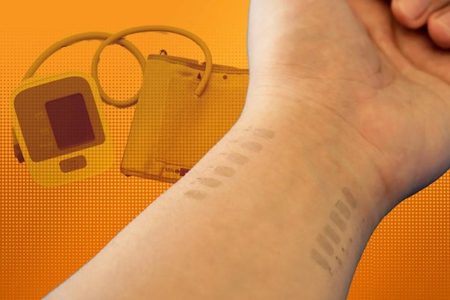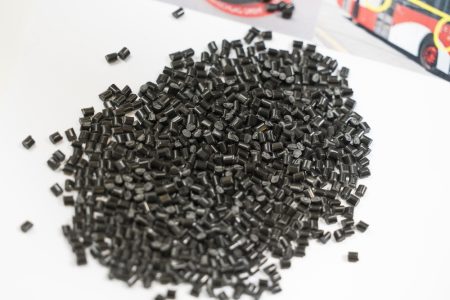Editor’s Blog – Graphene gets close to the heart of blood pressure monitoring
Uses for graphene continue to be developed, writes Caroline Hayes. Researchers at the University of Texas have developed an unobtrusive way to ditch the blood pressure cuff using a graphene sensor in a ‘tattoo’ patch.
Everyone is familiar with the visit to the doctor’s surgery to have the blood pressure cuff wrapped tightly around their arm for the doctor to measure how efficiently your heart is pumping blood around your body.
High blood pressure can lead to serious heart conditions if left untreated but it can be hard to capture with a traditional blood pressure check because that only measures a blood pressure at a single timepoint.
Now, researchers at the University of Texas at Austin and Texas A&M University have developed an alternative mode of measuring blood pressure for continuous monitoring over long periods of time.
“Taking infrequent blood pressure measurements has many limitations, and it does not provide insight into exactly how our body is functioning,” said Roozbeh Jafari, a professor of biomedical engineering, computer science and electrical engineering at Texas A&M and co-leader of the graphene e-tattoo project.

The graphene e-tattoo will deliver continuous monitoring and replace the conventional blood pressure cuff. Picture credit: University of Texas Austin.
Electronic tattoos are a lightweight, unobtrusive wearable option for blood pressure monitoring. The graphene sensor within the e-tattoo one the user’s wrist sends an electrical current into the skin and measures the body’s bioimpedance – or reaction. This reaction has an indirect correlation with the body’s blood pressure and is then analysed using machine learning models which were also developed for this study.
Smart watches or fitness trackers are able to monitor many body parameters but have limitations for blood pressure monitoring. They typically use metallic sensors for readings based on LED light sources which are shone through the skin, explained the research team. It has been found that light-based measurements can be unstable in people with darker skin tones. They are also susceptible for people with larger wrists and even for patients with smaller wrists, smart watches can slide up or down or around the arm/wrist and cannot be accurately and securely placed near arteries.
The e-tattoo, with embedded graphene sensor can be applied directly to the skin and remain there, without encumbering movement for days. (The more data available, over a longer period of time means a more accurate picture for health professionals.)
“All this data can help create a digital twin to model the human body, to predict and show how it might react and respond to treatments over time,” said Deji Akinwande, a professor in the Department of Electrical and Computer Engineering at UT Austin and the other co-leader of the project.
The e-tattoo developed by the team at University of Texas Austin and Texas A&M University was able to accurately monitor blood pressure in arteries for more than 300 minutes. This length of time could be extended, said the research team, to measure the wearer’s blood pressure in a range of activities including sleeping, exercising and during stressful events to provide more data for monitoring and diagnosis.
Ultimately, the team hopes to develop the tech into e-tattoos that can be worn by patients long-term to measure their blood pressure in a range of situations, including sleeping, exercise, and during stress. That data is important to help diagnose or monitor health conditions.
“The sensor for the tattoo is weightless and unobtrusive. You place it there. You don’t even see it, and it doesn’t move,” said Jafari. “You need the sensor to stay in the same place because if you happen to move it around, the measurements are going to be different.”

Graphene is a thin, strong and has excellent electrical properties. Picture credit: Graphene Flagship.
Graphene is a single atomic layer of graphite arranged into thin layers. Graphene is very thin (0.345nm), strong and highly conductive. It is the strongest material every discovered with an ultimate tensile strength of 130,000,000,000 Pascals (or 130 gigapascals), compared to 400,000,000 for A36 structural steel, or 375,700,000 for Aramid (Kevlar). It is also very light – 0.77mg per square metre or around 1,000 times lighter than a one square metre sheet of paper.
The research findings were published in a paper in Nature Nanotechnology.
Team members on the project include Dmitry Kireev and Neelotpala Kumar of the Department of Electrical and Computer Engineering at UT Austin; Kaan Sel and Bassem Ibrahim of the Department of Electrical and Computer Engineering at Texas A&M; and Ali Akbari of the Department of Biomedical Engineering at Texas A&M. The research was supported by grants from the Office of Naval Research, National Science Foundation and National Institutes of Health.




